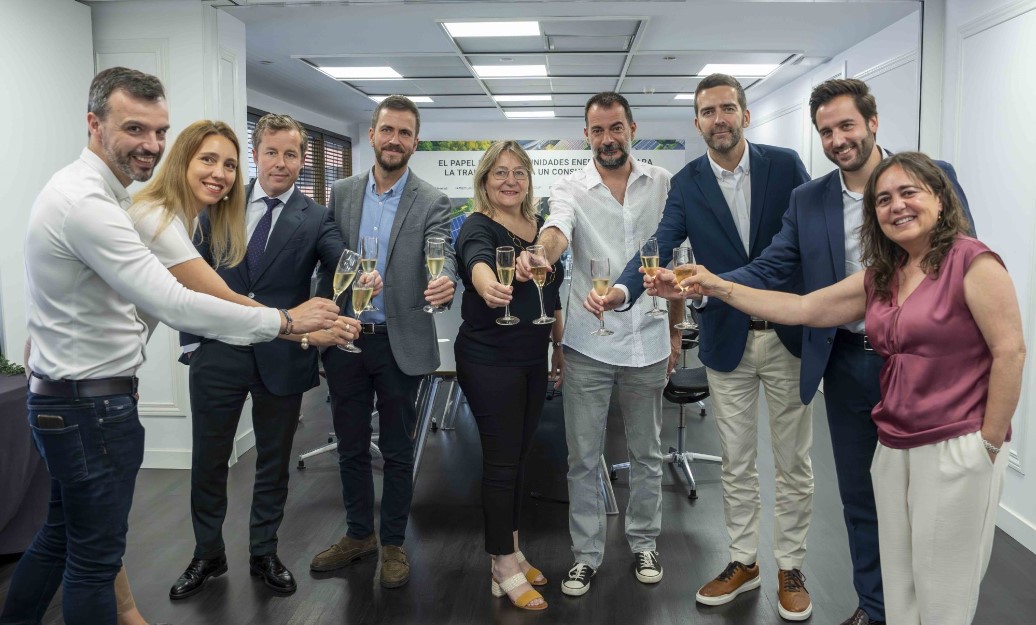
Original article in Hungarian: Marie Claire
This approach not only offers a cost-effective solution but also fosters a stronger sense of community whilst contributing to a more sustainable future. Exciting, isn’t it?
Let’s take a small town as an example, where every house is equipped with solar panels. The residents can come together to form an energy community, sharing the electricity they generate. If one household produces more energy than it needs, the surplus is distributed to their neighbours. This arrangement offers multiple benefits: it reduces reliance on large energy providers, fosters a more sustainable environment, and strengthens community bonds by encouraging collaboration.
How does a large European energy company fit into all this?
This year MET Group, in collaboration with local civil partners, established the "Green Community Award" to promote and support communities that actively participate in advancing the use of green energy. The first award recipients are based in Italy and Spain, where many such initiatives are already operating successfully.
"During the evaluation of applications, we encountered numerous inspiring stories where individuals turned energy supply challenges into solutions through their visionary approach. The achievements of the winning organizations highlight that conscious and organized energy consumption can lead to societal solutions and even economic benefits. Their sense of responsibility, independence, and entrepreneurial spirit are values that resonate strongly with our corporate culture," said Zsófia Végh, Communications Director of MET Group's renewable energy development division, regarding the award.
Innovation Embedded in History in a small Italian town
In Italy, the award was announced in collaboration with Legambiente, an Italian environmental protection association. The award was open to any community that uses renewable energy whilst also serving solidarity goals.
One of the winning projects came from the town of Narni, where the local government came up with a brilliant idea: to effectively combine tourism and sustainability. As part of the project, they are renovating a historic hydroelectric power plant built in 1892 in the nearby village of Stifone, transforming it into a centre for renewable energy production. In addition to generating hydro and solar power, the centre will serve educational and tourism purposes: it will house a visitor centre where tourists and schoolchildren can learn about the importance of renewable energy and reducing CO2 emissions.
This project not only boosts the local economy, but also reduces environmental impact. It's a true win-win situation where sustainability and community cooperation go hand in hand.
A Model Community in Andalusia to Combat Poverty
The tiny Andalusian village of Arroyomolinos de León is a shining example of how conscious energy use can be linked with helping those in need.
The energy community established in the village is made up of local families who have jointly installed a solar power plant on the roof of the village's eco-school. This fantastic project is capable of supplying energy to the school building as well as to homes of the 30 local families.
The locals of Arroyomolinos de León have a tremendous need for affordable and sustainable energy. With only 945 residents, the village faces a threat of depopulation. Previously, the energy supply to homes in the area was very poor, and residents lacked the knowledge needed for a more efficient and sustainable lifestyle. However, the introduction of the energy community changed everything.
The primary goal of the Arroyomolinos de León energy community was to reduce energy poverty. As a result of the project, families living in energy poverty receive 5 kW of energy, while the new sustainable energy production allows them to save 62.918 tons of CO2 annually.
Additionally, the school actively participates in operating the energy community. They manage the system for distributing self-consumed energy and run excellent training programs on energy efficiency and sustainable development. Through the school's educational program, even the youngest children can learn how to use and save energy and how to live a more conscious life.

Energy Community in Budapest
The first viable community stories have started to emerge in Hungary as well.
"Our concept was to welcome any institution, place, or organization into our membership where important activities for the local community take place, and where energy consumption is high. We can install solar panels on the roofs of their properties in a way that allows a significant portion of the electricity needed for their operations to be covered," explains Ágnes Szalkai-Lőrincz, a member of one of Hungary's first energy communities, the Közösségi Energia Szolgáltató Nonprofit Kft. (KESZ), formed through the collaboration of four enthusiastic civil organizations. And the best part? They operate entirely on a nonprofit basis, so everyone benefits.
A well-known cultural centre, Jurányi Incubator House, has also become a member of the KESZ energy community. Jurányi regularly hosts various cultural events, is home to the offices of 60 associations, and operates a restaurant and playhouse. They require continuous energy during the day, which will be provided by the solar panels installed on the roof. With this development, Jurányi will not only be a hub for culture but also for sustainability.
"The solar panels will be able to cover approximately one-third of Jurányi's annual consumption and, if everything goes well, they will also contribute to the production of hot water, reducing their gas consumption as well," adds Ágnes Szalkai-Lőrincz.
KESZ's philosophy extends beyond simply providing solar panels to institutions. "We aim to create projects that influence how people think about and use energy. The techniques learned from us can be integrated into their everyday life. Let's take a current example: if we run air conditioners during the day, we cool the house with cheap solar energy, as green electricity is generated during the sunny hours. However, if we turn on the air conditioner in the evening, we cool the house with energy from nuclear power or the much more expensive and polluting fossil fuel power plants. The difference lies in being mindful about energy use.”
